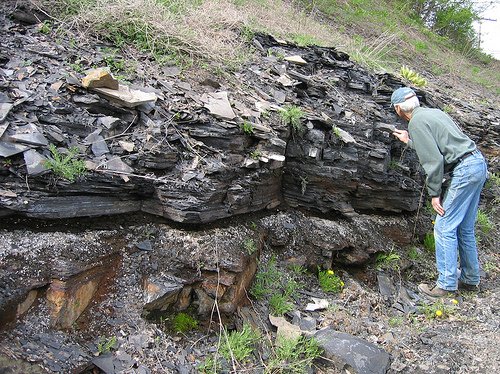Climate Insider Brief:
- A recent study in Engineering reveals the substantial capacity of shale reservoirs for carbon storage using CO2 fracturing technology, representing a significant advancement in China’s energy landscape and commitment to carbon neutrality.
- Titled “Carbon Storage Potential of Shale Reservoirs Based on CO2 Fracturing Technology,” the study delves into the intricate mechanisms of CO2 storage within shale formations.
- Key findings demonstrate the potential for around 1000 future wells in Gulong shale oil reservoirs to harness similar storage potential, resulting in nearly two million tons of stored CO2 by 2030.
A recent study published in Engineering has unveiled the significant carbon storage potential of shale reservoirs utilising CO2 fracturing technology. Conducted by a collaborative team from the PetroChina Research Institute of Petroleum Exploration and Development (Beijing), the National Key Laboratory of Continental Shale Oil (Daqing), and China University of Petroleum (Beijing), this research marks a notable advancement in China’s energy landscape and its commitment to carbon neutrality.
Shale reservoirs are integral to China’s energy strategy, and the adoption of CO2 fracturing presents a dual advantage: enhancing oil recovery while facilitating substantial CO2 storage. Titled “Carbon Storage Potential of Shale Reservoirs Based on CO2 Fracturing Technology,” the study explores the complex dynamics of CO2 storage mechanisms within shale formations, utilising real-world parameters from the GYYP1 well in the Songliao Basin.
Through sophisticated numerical simulations, the researchers have revealed the pivotal role of adsorption and diffusion in CO2 storage within shale reservoirs. Initial observations indicate that approximately 22.13% of CO2 is adsorbed during the fracturing process, with diffusion further enhancing CO2 interaction with the shale rock over time. This combined effect has led to a noteworthy 26.02% increase in CO2 adsorption, ensuring sustained and stable storage within the reservoir.

Key findings from the study demonstrate an impressive CO2 storage efficiency of 80.15% over a decade, showcasing the considerable potential of CO2 fracturing technology. Notably, the research emphasises the concentration of absorbed CO2 around the horizontal well, highlighting the significance of diffusion in maximising storage capabilities.
Furthermore, extrapolations based on data from the GYYP1 well suggest that around 1000 future wells in Gulong shale oil reservoirs could harness similar storage potential, resulting in nearly two million tons of stored CO2 by 2030. Such projections hold substantial promise for bolstering energy security and aligning with China’s objectives of achieving a carbon peak and carbon neutrality.
This study sheds light on the vast potential of CO2 fracturing technology in both enhancing oil recovery and mitigating carbon emissions. By leveraging the innate storage capabilities of shale reservoirs, significant progress can be made towards a more sustainable energy future.
This research underscores the importance of ongoing innovation in energy technologies and establishes a compelling precedent for future advancements in CO2 fracturing methodologies. As China intensifies its pursuit of carbon neutrality, initiatives like this will play a crucial role in shaping a greener and more sustainable future.
To stay informed about the climate industry explore our latest climate news.
Featured Image: Credit: Energy.gov








